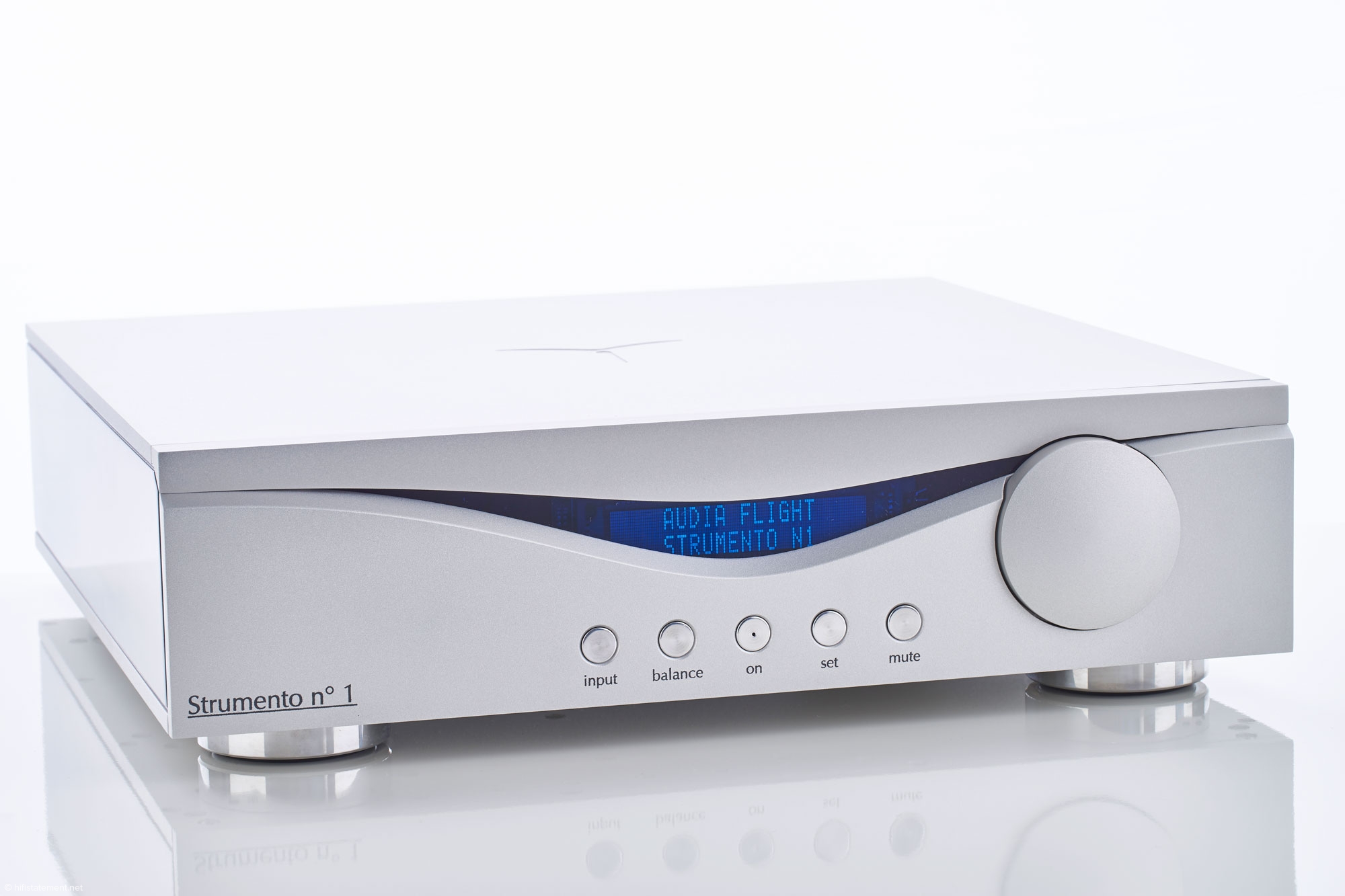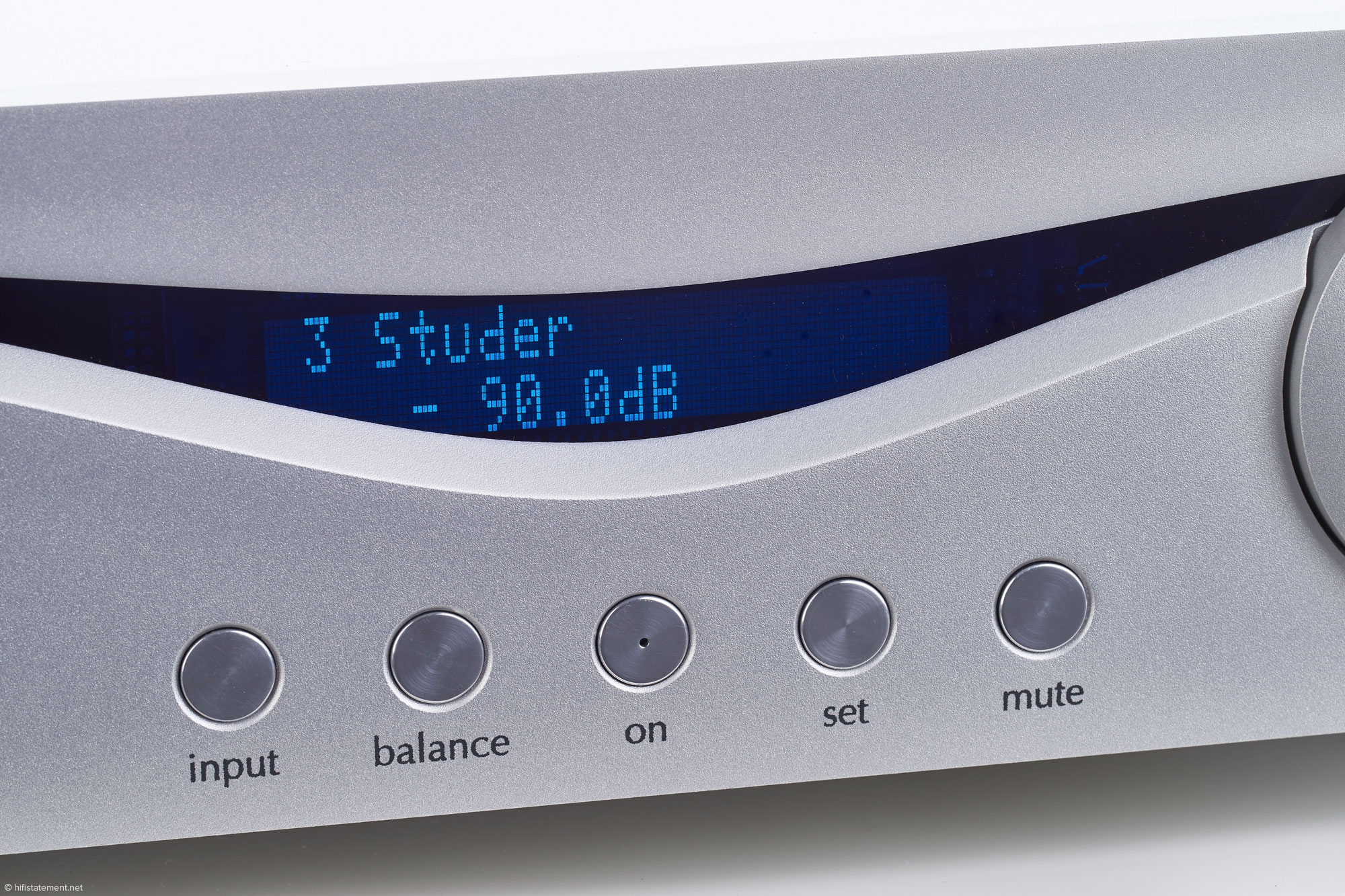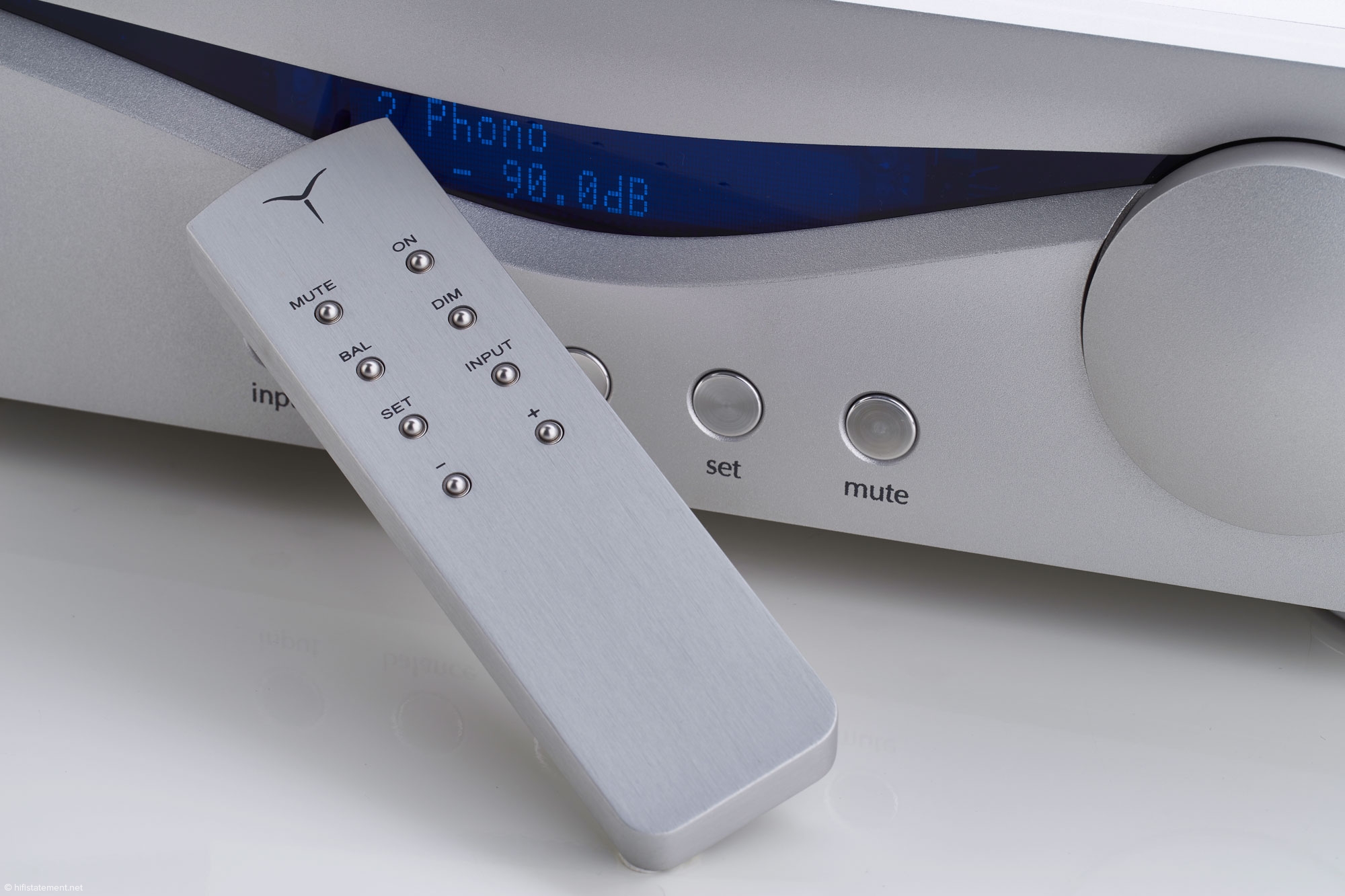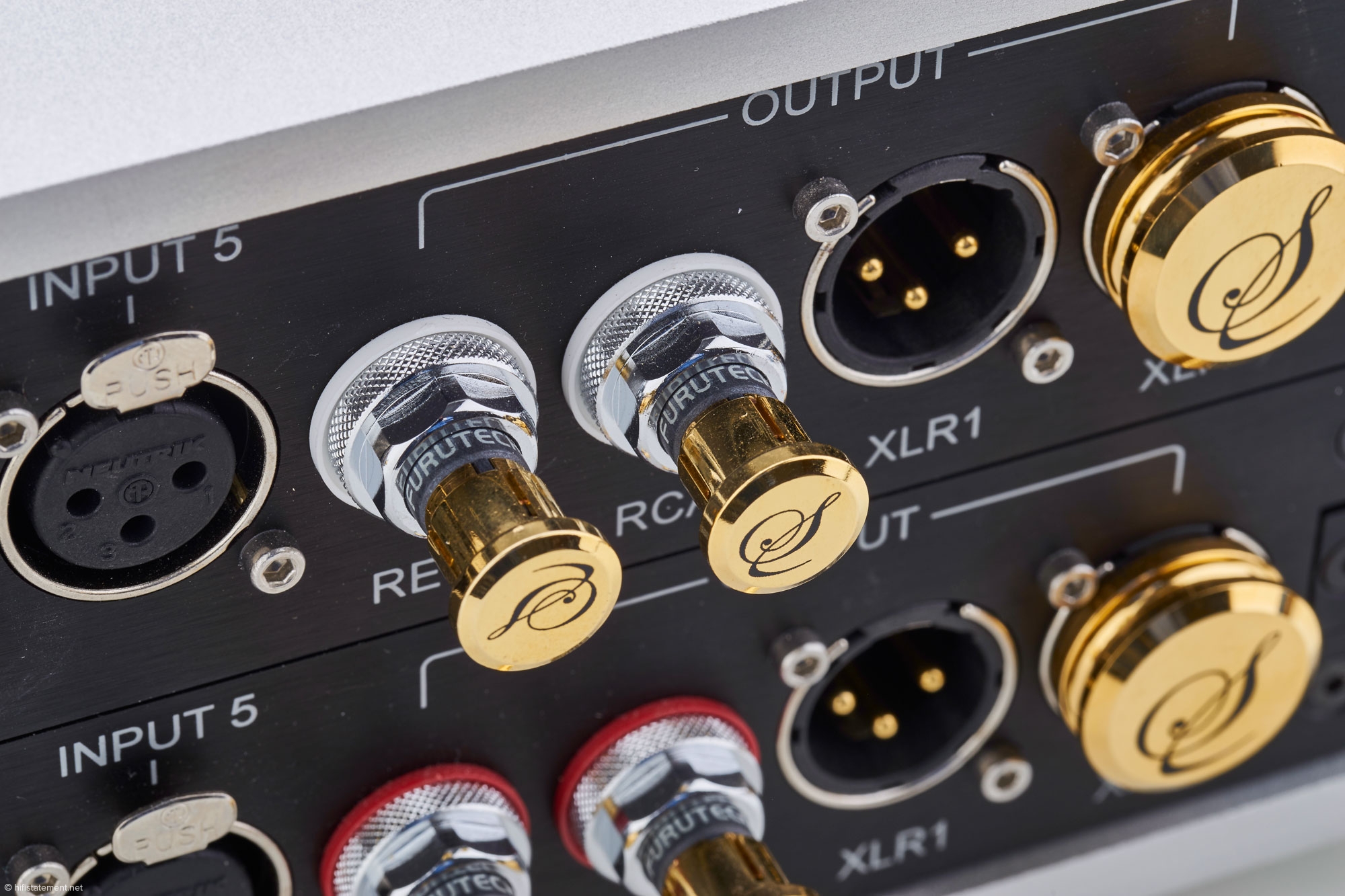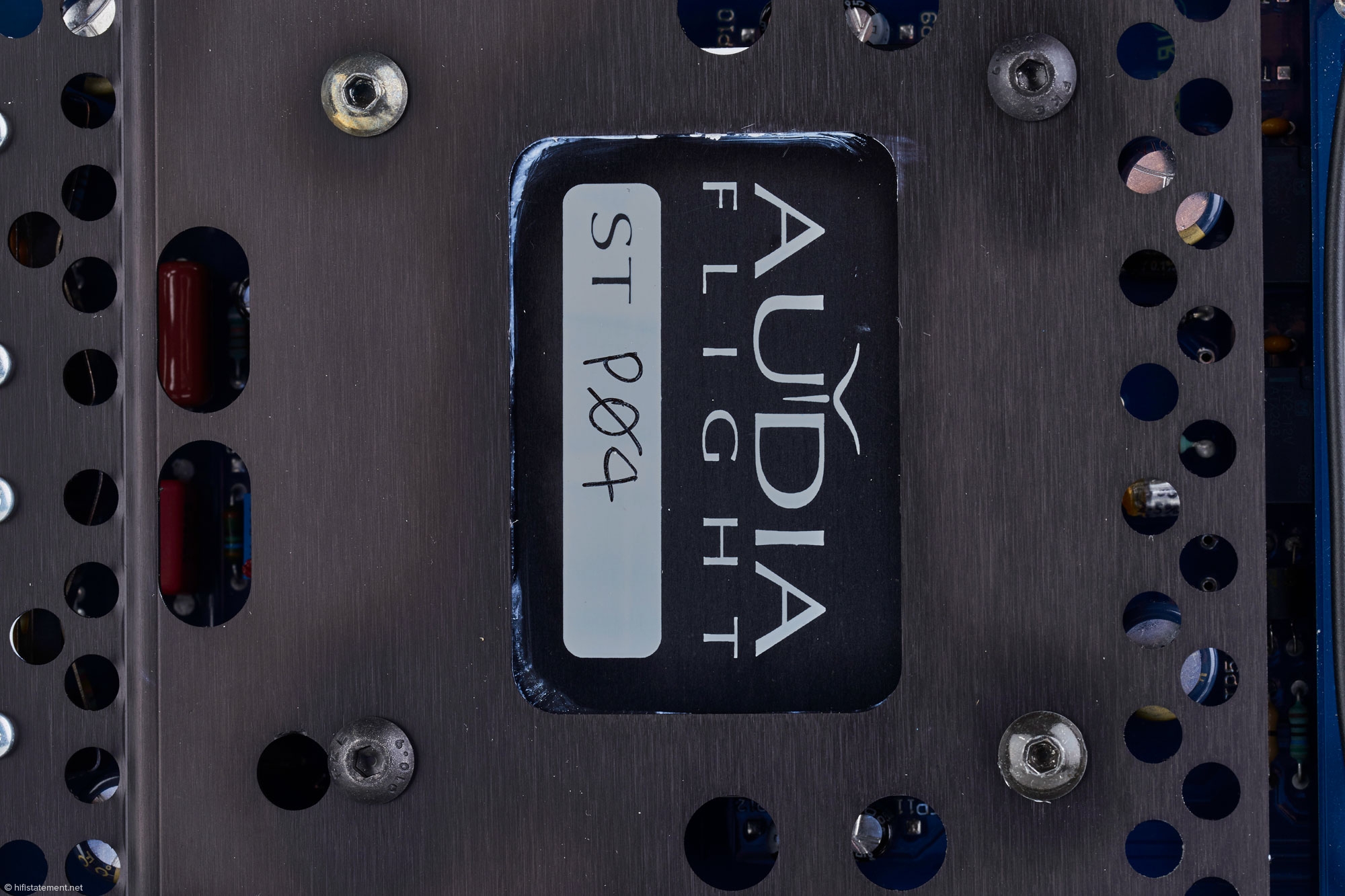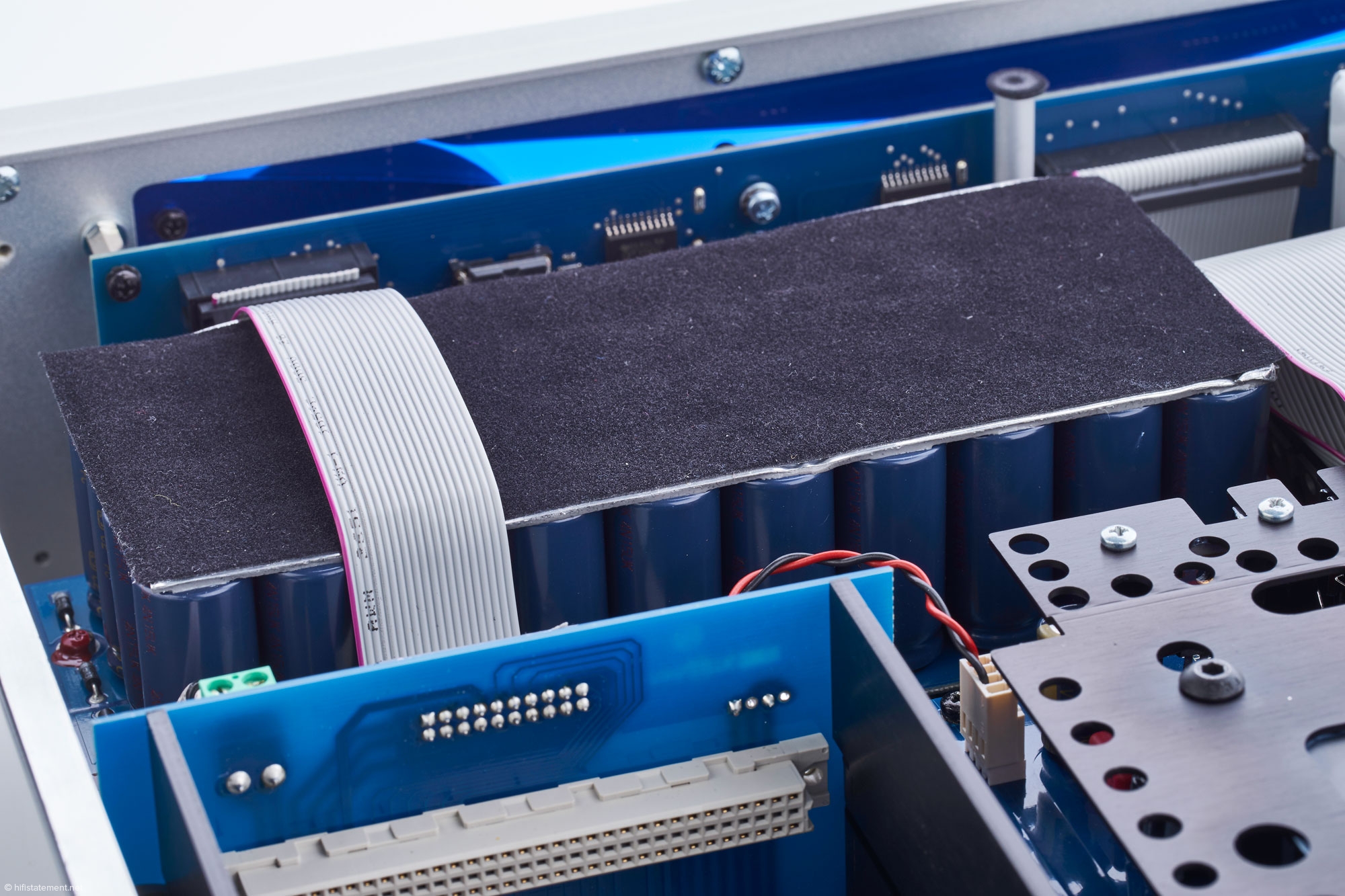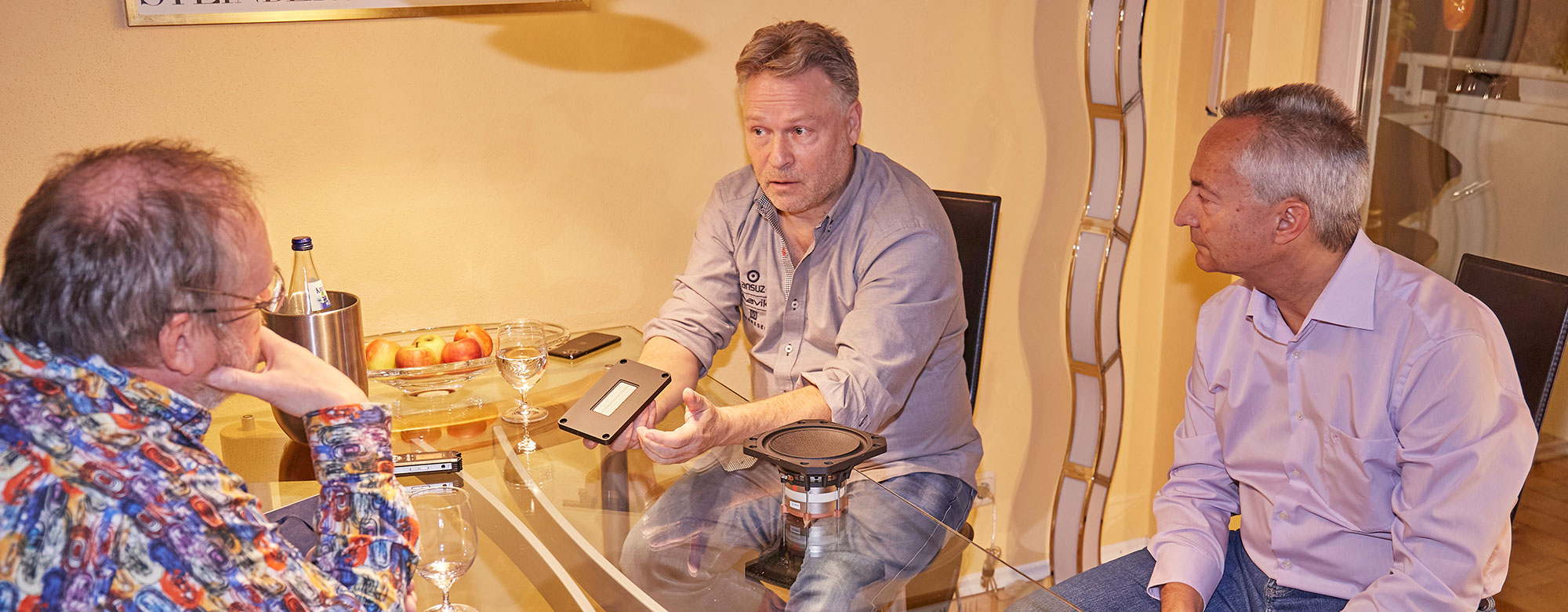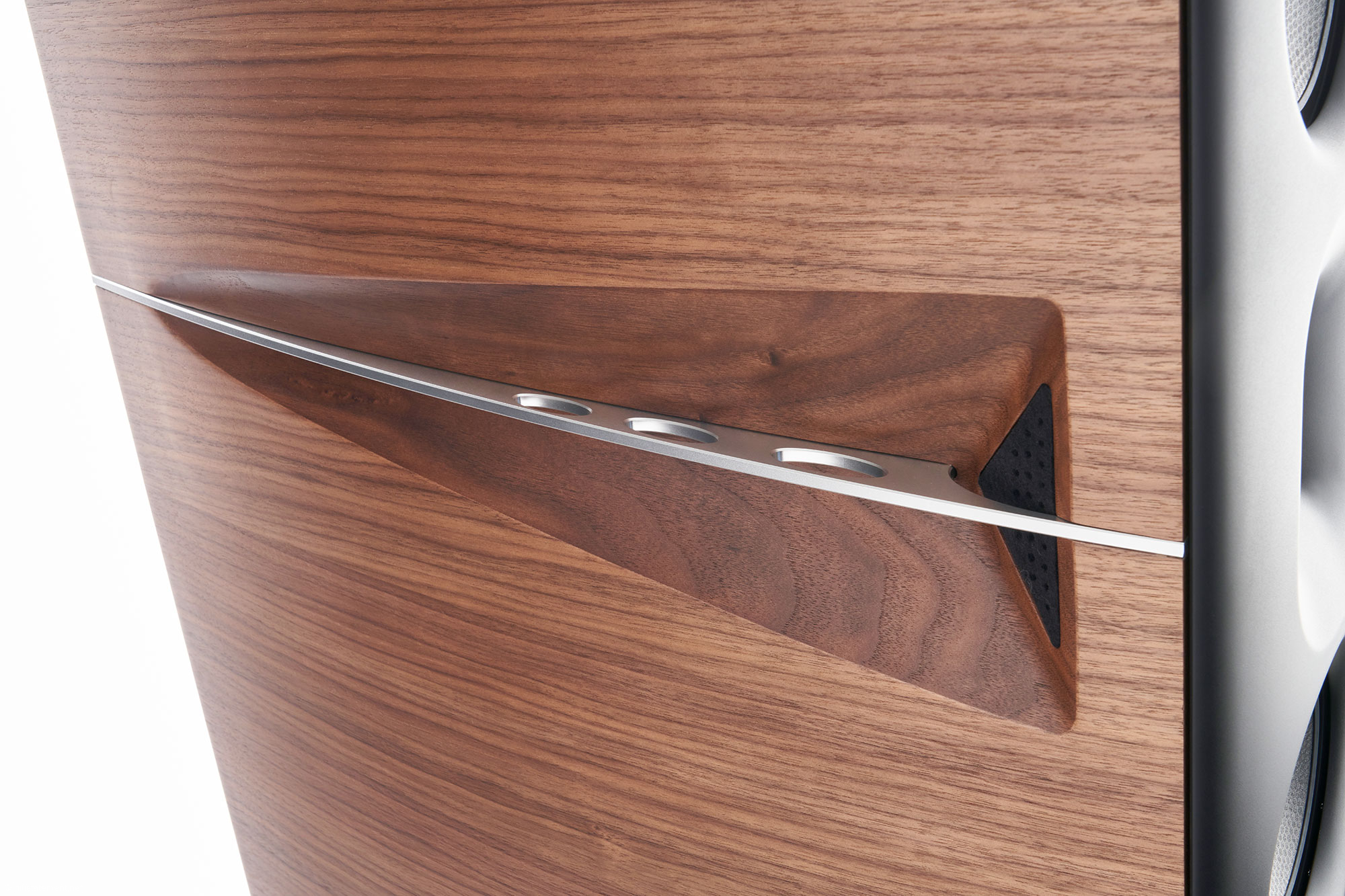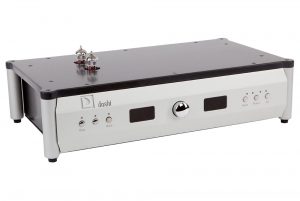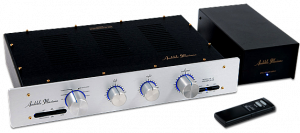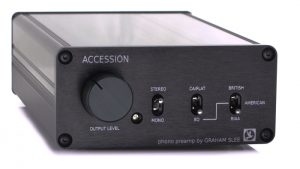The Audia Flight Strumento n°1 mk2 Preamp
Many audiophiles believe that they can get along without any preamplifier in these digital times. However, I do not share this point of view: To me a preamplifier is an indispensable partner that, by the way, also should have sufficient balanced inputs. Yet, the Audia Flight does not only impress with its five XLR inputs that were kept on board also in the new mk2 version. There's much more to it than that.
Even if today some excellent value-for-money rated D/A converters such as the Mytek Brooklyn not only offer an analogue input, but highlight a front-to-back analogue signal path, including a corresponding volume control, I still cannot do without a preamplifier. On the one hand, at least three balanced output equipped sources are eager to be alternately connected to the power amps, while on the other hand the convenient installation of nearly the complete audio system next to the listening position requires almost six meters of line cabling to the power amplifiers which sit beside the speakers. So to cover that distance, the signal should be processed in an optimal way. In other words, the output stage should provide a certain current delivery capacity and a quite low output impedance. The dogma that fewer components within the signal path should, in principle, lead to better sound, I cannot confirm by any of my experimental trials. (I must admit that there haven't been that many of those, but what I have done indicates what I have noted.) Converters without analogue volume control I never run without a preamplifier, not even for a short test, because I constantly fear that reducing the volume also reduces the resolution at the same time. No matter how much I've been enthusiastic about digital technology over the past five years, I still remain conservative when the preamplifier comes into play.
The well-done Audia Flight design has a high recognition value. The expenditure invested in the surface treatment is considerable: the hand-polished parts are assembled, then separated, marked and finally anodized.
With this kind of approach I seem to perfectly match the target group focused by Audia Flight with their Strumento n°1 mk2. Audia Flight is a company that is known for the appreciation of classic high-end values paired with an appropriate use of materials. This already starts with the packaging: Just like my long-standing and current favourite, Einstein's The Preamp, this Italian preamplifier is also delivered in a heavy wooden box. But even without the box it still weighs 28 kilograms. This is also due to the extremely attractive and high-quality processed aluminum housing. And in addition, the 40 low ohm filter capacitors designed for voltages up to 100 volts, each with 680 microfarads, as well as the four ferromagnetically shielded and potted mains transformers also significantly contribute to the weight. Also consider the two 75 watt toroidal transformers for the audio circuitry of each of the two audio channels, a 25 watt transformer for the control electronics, and one with an output power of 15 watts for the logical circuitry. The kilograms certainly mount up! The power supply for the audio circuit shows eight voltage regulators of very low noise that provide ± 60 and ± 18 volts for each channel.
The display shows the number of the input, its name as selected by the user, and the value of the volume.
Balanced supply voltages of 60 volts do in fact guarantee lots of "headroom," or high overload stability, as well as nearly unrestricted dynamics, but apart from power amplifiers as seen within the hi-fi world, these voltage concepts are notably rare in other audio applications, due to cost considerations. They usually only make sense if the amplifier sections are built up with discrete components that are able to cope with these voltages. In the studio equipment sector, SPL has successfully been using this technology for years, as the test reports on the Phonitor 2 and the Director from their Pro-Fi line for home use show. Regarding the voltage supply of the Strumento n°1, I should add that the aforementioned 40 electrolytic capacitors are located under a special plate to eliminate electromagnetic interference, as well as to limit mechanical vibrations, while "ultrafast" diodes take over the rectification process.
In order to illustrate the circuit topology of the preamp, I follow the signal from the input to the output sections. Let's start at one of the two RCA or one of the five XLR inputs. Right behind the input selection are relays, which also disconnect the ground connection of the non-active XLR inputs from the circuitry; two buffer amps take care of the inverted and the non-inverted part of the now purely balanced signal. The non-inverted signal for the tape recording output is then branched off and fed to the RCA output sockets after further buffering. Behind the two buffer amplifiers of each channel, the Audia Flight features not less than two volume controls: a discrete one with very low-noise metal-film resistors and relays, and one using the PGA2310 IC. The control electronics of the preamplifier decides which of the two has to be active in the signal path. If the volume setting is on a constant level, relays and resistors define the level. If the volume level changes, the PGA2310 immediately takes over, since it runs totally silent during the control process—unlike the discretely operating controllers. After the relays and resistors having adjusted the required volume level, the control electronics switch the discrete ones back into the signal path.
A company like Audia Flight, who provide their preamp with a leather-bound instructions manual, certainly will also provide a professional remote control. And they do.
The company's director Massimiliano Marzi notes in his e-mail that the PGA2310 works so well that it is used in many competitive products for the level control itself. However, their proprietary design with relays and resistors gets a good bit closer to the ideal conception of an entirely loss-free volume control with a constant-impedance behavior. And in his eyes that more than justifies the additional expense. Only if the impedance throughout the volume attenuation process does not change will the edge steepness and the frequency response remain constant. Audia Flight's "constant impedance attenuator" leaves other solutions far behind, and allows for the extremely extended frequency response from 3Hz to 1mHz with a deviation of a maximum of 3dB and a slew rate of more than 250 volts per microsecond in the entire level range from -90 to +10dB. The circuit's control range comprises 127dB in constant steps of 0.5dB, whereby the level adjustment runs fully silent without creating any clicking noise in the loudspeakers.
There is no shortage of balanced inputs at all; the author is pleased!
The volume attenuation section is followed by two "gain stages" or voltage amplifiers per channel. This involves a discrete circuit designed by Audio Flight with current feedback, operating in Class A mode. The voltage amplification stage is housed in an aluminum enclosure and is encapsulated with epoxy resin for reasons of thermal stability of all components. A large aluminum plate serves for heat removal. The subsequent, very low-noise output stage, also works in Class A mode. Due to its high current supply capability, it is said to be capable of driving any existing power amplifier, and was put into practice with MOSFET transistors, after having tested circuits with EXFET and bipolar transistors in long listening sessions. The fact that each of the two stereo channels is accommodated on its own printed circuit board, that the conductor tracks feature a particularly thick copper layer, and that grounding and voltage conductors are executed as copper rails, does not really surprise at all in view of the previously described elaborate solutions.
Even though this Strumento n°1 mk2 has already been played at some trade fairs, I offered it a week or two of refreshment on the grid to acclimatize in my listening room. In the meantime, I became familiar with its operation. After pressing the "Set" button, the level of each input can be varied by plus/minus 6dB in order to avoid volume jumps when switching between the inputs due to sources providing different output levels. In the next menu item, the inputs 1 and 2 have to be defined as balanced or unbalanced. Under "Direct" you are able to deactivate the volume control for an input of your choice destined for the operation of the Strumento n°1 mk2 in a multi-channel system—but who, for goodness sake, wants to ever connect such a fine high-end preamplifier to a home cinema system? The next step is "Edit," which offers the possibility to name the inputs individually. "Link" takes care of the configuration of trigger voltages, in order to switch other components in the audio system on or off together with the preamplifier. "Default" restores the factory settings. Last, but not least, you get the version number of the firmware displayed.
The RCA sockets are made by Furutech, while the RCA and XLR caps come from the Sieveking accessory range.
The display of the Strumento n°1 shows "DAVE," and I click through the relevant songs stored on the Melco's hard disks, which the Chord DAVE then provides as an analogue signal to the Audia Flight. However, with Muddy Waters' album Folk Singer, which was re-released by MFSL almost a quarter of a century ago, I rest quite a bit longer: a voice, two guitars, a bass and a minimalist drum set—really not that big challenge for a high-quality audio system. And yet I am struck by what the Strumento n°1 gets out of this well-known record. Initially there is this large, brightly illuminated recording studio, added by the sometimes mellifluous, sometimes explosive voice. The vigorously picked guitar strings pounce with a rarely heard vehemence. Willie Dixon's double bass mumbles along as usual due to the recording conditions, but rhythmically it still delivers with propulsion. And when now and again Clifton James kicks his bass drum; this happens with lots of pressure. Dynamics, speed, and clarity get combined by the Strumento n°1 with enthusiasm and vibrancy in an exceptionally harmonic way—and that without a single trace of cold analytics! Over the years, I am more and more weaned off associating design features or the technical data of a component with the sound impressions that I experience. But here the correlation between the preamp's short rise time and the playback's dynamics is virtually imposing. In any case, Einstein's The Poweramp and, without missing the slightest bit, the Kawero! Classic, are inspired by the output of the Audia Flight to new dynamic heights.
These compartments have been left empty: phono modules will be available next year.
On the hard disk, I also come across a recording that a fairly long time ago I used as a CD every now and then for testing: Les Cargos by L'Orchestre des Contrebasses. The waltz "Beret, Beurre, Cornichons" hasn't lost anything of its fascination—yeah, if my memory doesn't deceive me, it now sounds even more exciting. Not least because of the Strumento n°1, the seven voluminous performing basses act here with an enormous joy of playing and a virtual swinging lightness. But this is not to say that the basses here are lacking pressure or blackness - on the contrary: What excites me with the Audia Flight, is the combination of low-frequency impact and the smooth flowing of the melodies. For pure enjoyment I listen to the radio play for seven double basses: In "Week End a Deauville" they describe the car journey to a seaside resort, and after getting off the car the sounds of the sea: wind, crying seagulls, chugging marine diesels, the tooting of a ship's horn, and even the rattling of the rigs in the wind. The excellent fine detail resolution and the extraordinary transparency of the Strumento n°1 allow a clear view on the tremendous virtuosity of the septet in their creation of sound effects. While I am still intrigued by the squeaking of a big door slowly fading away, and while thinking about the further progress of the story, the initial intense impulses of "Vertigo" suddenly startle me. Oh no, you do not need to fear any further polemic words against too-short track intervals in modern CD recordings—as justified as that would be. The surprisingly cumulated bass energy for me is only a further evidence that the Audia Flight, besides its other enormous abilities, dynamically performs on highest levels.
Unlike its predecessor, the Strumento n°1 mk2 does not require a ventilator despite the amplifier stages operating in Class A mode.
Lots of speed, openness, and differentiation could theoretically, of course, be a little too much of a good thing. Therefore, I briefly give Van Morrison's "Whatever Happened to PJ Proby?" a listen, which has proven to be a bit critical in the presence range during my testing of the terrific Diapason Astera. With the Strumento n°1 paired to The Poweramp and the Kawero! this now is no longer in question. The quite open-hearted presence range now faces a proper lusciousness in the lower frequencies, as the the Kawero!s very well make clear. No, the Audia Flight performs in an extremely fast, open, and enthusiastic way, but tonally still behaves in a sonorous, pleasant, and minimally warm way within the sound spectrum. It's just marvelous! Even if the preamp goes about it too honestly to be blamed for playing too euphonically, it does not belong to that excessively analytical preamplifier types that make listening to every lower-quality recording a pain. It does reveal the weaknesses of a recording, but it does not spoil the musical enjoyment: This is an extremely successful approach, which rarely is to be found.
The circuit boards are shielded by these plates; the drill holes allow for the required air circulation.
Over the last few weeks, I have exclusively been working with the Audia Flight, enjoying music for pure relaxation—without missing the slightest bit. Nevertheless, I should briefly compare it with Einstein's The Preamp, so that you are able to better classify my sound description so far: When playing Patrice Heral's mandatory percussion improvisation recorded in the monastery of Noirlac, the Einstein suggests a somewhat deeper spatial image. The seven basses in "Beret, Beurre, Cornichons" appear to be prancing slightly more fleet-footed over the minimally slender Strumento n°1. The intense beginning of "Vertigo" with the Einstein is at least as exciting as with the Audia Flight. Van Morrison's album Down The Road can be played a bit louder with The Preamp, while grooving more intensely. The positioning of the instruments in the imaginary space and their demarcation against each other, on the other hand, are delivered by the Strumento n°1 with a little more precision. Regrettably, the listening impressions correspond exactly to the general stereotype: The tube preamplifier performs with a few percent more of emotion; its solid state counterpart plays with a bit more of transparency. Here the individual taste has to take over the decision. Both amps differ sonically only in shades, but have in common that they operate on an extremely high level. I really could be happy with either!
The filter capacitors are mechanically soothed. The plate is intended to also take effect against electromagnetic interference.
STATEMENT
Audia Flight's mk2 version of the Strumento n°1 presents itself as a near-perfect high-end preamplifier: In an absolute convincing manner it combines apparently unlimited dynamic abilities, tremendous attention to detail and precise transparency with a coherent tonality. Vibrant sound colors and a rock solid bass foundation ensure that even lower-quality recordings always remain enjoyable, despite the amp's high resolution and bright space imaging capabilities: This really is the finest Italian engineering and craftsmanship, created for a great musical experience!
Review system
- NAS: Melco HA-N1 ZH60, WD MyCloud
- Streaming Bridg: Auralic Aries Femto w/ SBooster BOTW P&P Eco
- D/A converte: Chord DAVE
- Turntabl: Brinkmann LaGrange w/ tube power supply
- Tonearm: Thales Simplicity, AMG 12JT Turbo
- Cartridge: Lyra Olympos, Transrotor Tamino
- Phono preamp: Einstein The Turntable‘s Choice (balanced)
- Preamp: Einstein The Preamp
- Power Amp: Ayon Epsilon w/ KT150 tubes, Einstein The Poweramp, Kaiser Acoustics Kawero! Classic, LumenWhite DiamondLight
- Cable: HMS Gran Finale Jubilee, Swiss Cables Reference Plus, Goebel High End Lacorde, Habst Ultra III, Audioquest Diamond and Carbon, Cardas Audio Clear Network
- Accessories: PS Audio Power Regenerator P5, Clearaudio Matrix, Sun Leiste, Audioplan Powerstar, HMS wall sockets, Acapella bases, Acoustic System feet and resonators, Finite Elemente Pagode Master Reference Heavy Duty and Cerabase, Harmonix Real Focus and Room Tuning Disks, Audio Exklusiv Silentplugs
Audia Flight Strumento n°1 mk2
Retail: 12500 euros
DISTRIBUTOR
Sieveking Sound GmbH & Co KG
Contact person
Jan Sieveking
Plantage 20
28215 Bremen
Germany
+49 421 6848930





